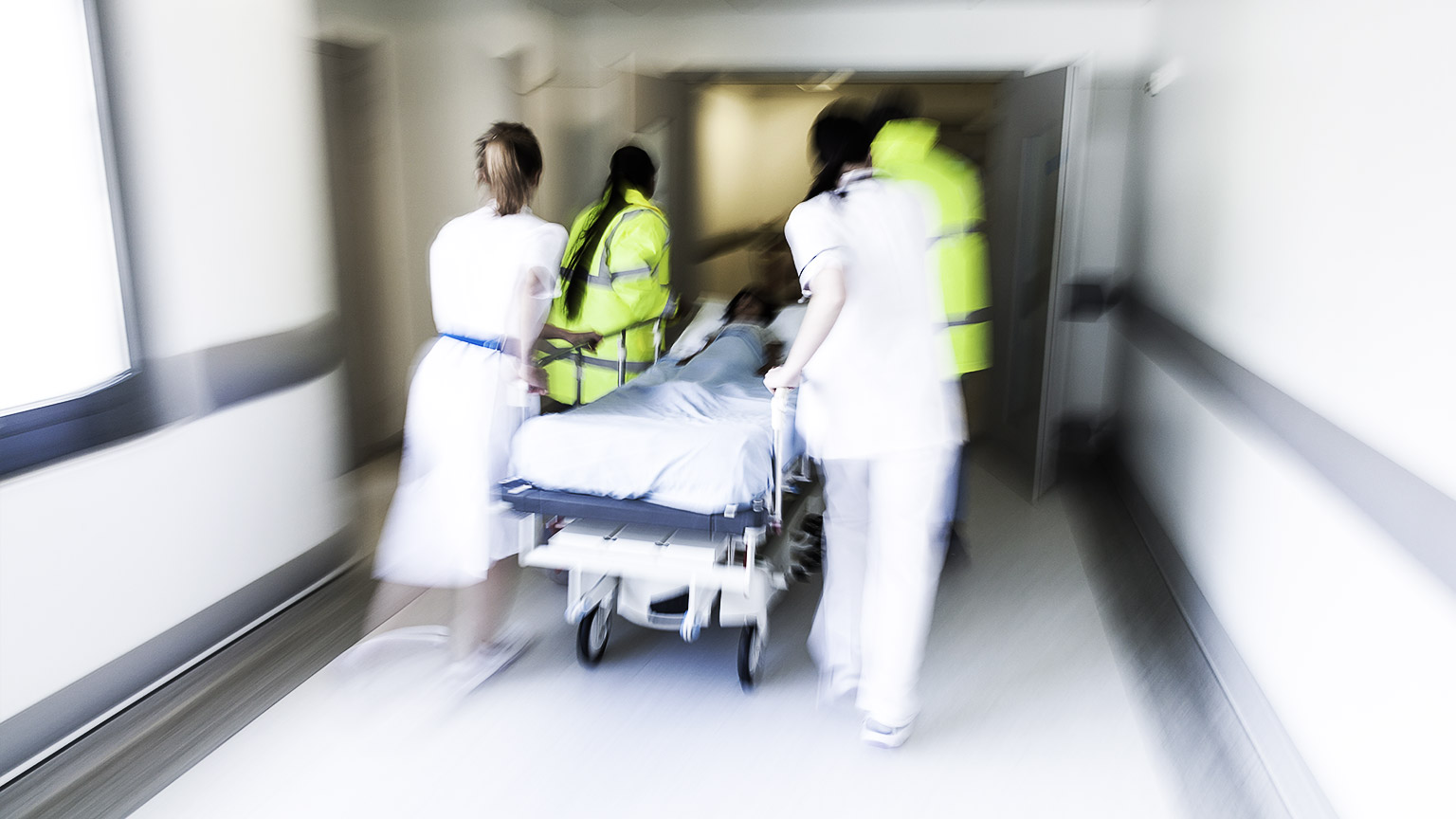Emergency procedures include safety procedures for fire, emergency and first aid. Whilst we hope that we never encounter any of these situations, it is inevitable that at some stage we will, and it is critical we understand our responsibilities to follow all emergency procedures. In this topic we will investigate first aid in the workplace as well as fire and emergency evacuations.
By the end of this topic, you will understand:
- How to recognise emergency and evacuation procedures
- How to access first aid in line with organisational policies and procedures.
Emergency situations can range from fire and smoke, to personal injuries and threats, bomb threats, suspicious mail, biohazards and chemical spills, gas leaks, floods and other natural disasters. Such emergencies may necessitate a need to evacuate or initiate a lockdown.
Your employer is required to develop and inform you of a range of emergency procedures, such as fire and evacuation processes, first aid and emergency response.
It is important that your policy and procedures contain sufficient detail to address all possible emergency scenarios in the context of each service environment.
Different emergency situations may present different levels of risk and require different responses, dependent on where a service is located. For example, a service might be located in a flood prone region, or be surrounded by bushland, making it more susceptible to bushfires.
Fire and Emergency Procedures
Education and care services national regulations - reg 97
Emergency and evacuation procedures
97 Emergency and evacuation procedures
- The emergency and evacuation procedures required under regulation 168 must set out--
- instructions for what must be done in the event of an emergency; and
- an emergency and evacuation floor plan.
- For the purposes of preparing the emergency and evacuation procedures, the approved provider of an education and care service must ensure that a risk assessment is conducted to identify potential emergencies that are relevant to the service.
- Penalty: $2000
- The approved provider of an education and care service must ensure that--
- in the case of a centre-based service, the emergency and evacuation procedures are rehearsed every 3 months by the staff members, volunteers and children present at the service on the day of the rehearsal and the responsible person in relation to the service who is present at the time of the rehearsal; and
- (ab) in the case of a family day care service, the emergency and evacuation procedures are rehearsed every 3 months by each family day care educator and the children being educated and cared for by the family day care educator on that day; and
- the rehearsals of the emergency and evacuation procedures are documented.
- Penalty: $2000
- The approved provider of an education and care service must ensure that a copy of the emergency and evacuation floor plan and instructions are displayed in a prominent position near each exit at the education and care service premises, including a family day care residence and approved family day care venue.
- Penalty: $2000
Under WHS legislation, your workplace is required to have an evacuation plan positioned near each exit of the education and care premises and that will include similar procedures to the diagram shown below:
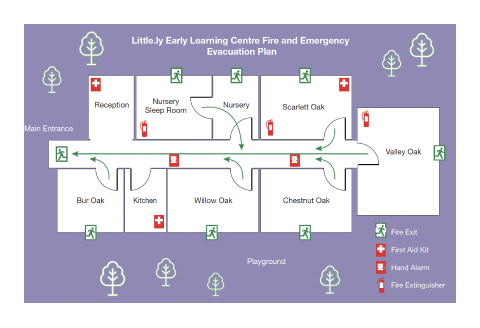
As you can see from the diagram of Little.Ly centre map, the service has identified all the rooms on the map, in each room a directional arrow identifies the evacuation route that staff and children need to take when evacuating the service. As well on the map, it has been identified with the key where first aid kits, fire extinguishers and hand alarms are located in the service.
Fire and evacuation procedures are reliant on a number of points:
- Fire exits and evacuation routes being clear and accessible
- Staff having adequate training and understanding of evacuation procedures
- Equipment and signage being in good working order.
For any emergency or fire in the workplace, as a worker you have a responsibility to comply and cooperate with your organisation’s WHS policies and procedures, alongside any policies and procedures that relate to emergencies and fire.
Following Emergency and Contingency Plans
Part of your overall induction as a new employee has to include a WHS induction. Part of this process will include a walkthrough of your workplace so that you are familiar with:
- Emergency signage
- Exit and entry points
- The location of emergency equipment
- Where to locate first aid or a first aider
- Emergency meeting points
- Bulletin boards where information is updated.
Under WHS legislation, a business must ensure that an emergency plan is prepared that is specific to its workplace and location. If you visit several workplaces, then you need to look at the emergency plan at each location. Emergency plans should be easily accessible to workers. For example, displaying an emergency plan for workers on a bulletin board so that they can familiarise themselves with it prior to an emergency occurring.
Emergency plans aim to:
- Reduce threats to people, property, the environment and the business
- Control and minimise the impact of any event
- Ensure that the responsibilities of key people are clear to everyone (who does what) with an appropriate back-up in each case
- Ensures that people receive appropriate information, training and back-up in order to perform their roles safely
First Aid and Injury
Your employer is obligated to provide first aid support for all who enter the workplace. The model code of practice (Safe Work Australia, n.d. [G]) defines factors such as:
- Responsibilities for providing first aid
- First-aid requirements based on the nature of the workplace, specific hazards, size and location of workplace and number of workers
- The requirement to provide first aid facilities and training to workers
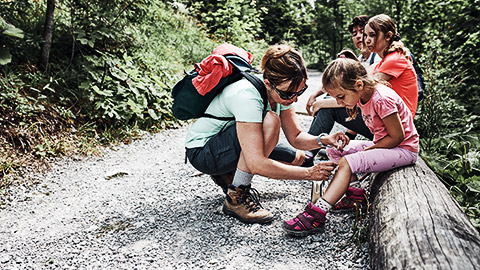
First aid facilities may range from a dedicated medical support staff member and first aid room to having a number of trained first aiders on staff. Regardless of size, your organisation must have first aid kits on site.
Website
Sate Work Australia provides the workplace requirements for the provision of first aid in model code of practice.

Injuries and illnesses not only cause pain for the person involved, but they are very disruptive to the organisation’s operations. All injuries can be prevented. This is a realistic goal. Acceptance of this principle is essential if excellence in safety performance is to be achieved. It is possible to safeguard all operating exposures that may result in injuries, damage, or third-party losses. No matter what the exposure is, safeguards are mandatory and must be provided.
Workers must take action to maintain safe housekeeping practices.
For example:
- Post signs and reminders of how to do things safely (lifting, food handling, etc.)
- Keep work area clean and uncluttered
- Develop systems for maintaining tidy work area. For example, posts checklists by the light switch to ensure that safety tasks are assessed daily
- Make sure supplies are stocked to ensure procedures can be followed
- Put everything in a designated area; take the time, every time to put things away
- Wherever possible, filing cabinets should be arranged to prevent a cabinet from toppling when one of the higher draws is open.
- Always close a drawer before opening another in the filing cabinet
- Never leave the desk or filing cabinet with a drawer half open
- Keep items such as paper clips, thumbtacks, rubber bands, pencils, etc., off the floor where they are a slipping hazard
- Always stand on an approved ladder or stool to get higher placed items. Never use a swivel chair or other makeshift device
- Use staplers, paper cutters, knives and scissors with care. Paper cutters should be left in a closed position.
- Pick up paper at the corner not the side to avoid paper cuts
- Handle sharpened pencils with care and do not leave them upright in a container
- Never throw glass or cans with sharp edges or similar objects in a wastepaper bin
- Distorted, broken or sharp edges on furniture should be repaired immediately
- Keep electrical, phone and computer cords off floors and out of isles
- Remove any spills from floors and other work areas immediately
- Open doors into rooms carefully, something or someone may be on the other side
- Tack down loose carpeting or flooring without delay
- Do not place feet on chairs or desks while seated
- Use handrails when climbing or descending stairs
- Ensure that stairways are adequately lit
- Develop checklists to ensure things are checked for safety regularly

Examples of items on checklists:
- Put items away, e.g., ladders, tools, boxes, etc.
- Regularly check all equipment and ensure broken or damaged items are disposed of according to policies and procedures
- Check all electrical outlets
- Ensure chemicals are stored and locked properly
- Entrances are clear
- Personal items are stored out of reach
- Bathrooms and kitchens are stocked with necessary supplies to ensure proper sanitation Ø Supplies and materials are stocked and ready
- Windows are secured and cords are out of reach
- Safety gates and security doors are working properly
- Storage cabinets are hazard free and kept locked
- First aid kits are stocked and supplied
- Smoke alarms or any other alarms are in good working order.
A general checklist gives you the flexibility to look at anything or everything. They also ask basic questions about the work methods with sometimes surprising results. Checklists should be used as aids to stimulate safety awareness about a variety of workplace issues and processes. They should not be dictatorial so that, if it is not on the list, do not bother about it.
Safe sleep and rest procedures in ECEC
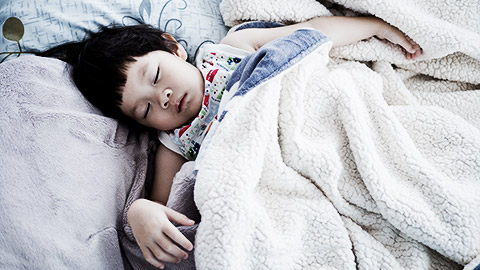
The National Quality Standard sets quality practice and your policies relating to sleep and rest for children and procedures should be directed to achieving that standard. A guiding principle of the education and care services National Quality Framework is that best practice is expected in the provision of education and care services. Red Nose (formerly SIDS and Kids) is the recognised national authority on safe sleeping practices for infants and children.
Approved providers nominated supervisors and service leaders should consult Red Nose resources for best practice guidance when reviewing and updating sleep and rest policies and procedures. In addition, the Australian Children Education and Care Quality Authority (ACECQA) publishes guidance for Sleep and rest for children policy and procedure guidelines and Sleep and rest risk assessment template. Safety requirements for relevant equipment, such as cots, mattresses, bedding and evacuation cots will also need to be considered. How these work in practice should be documented in your procedures. Every service is different, so it is not sufficient to apply generic policies and procedures to 4 Sleep and rest for children policy guidelines multiple services. You will need to ensure that your policies and procedures are appropriate and adapted to your particular service’s operations and its unique context.
Changes to the legislative requirements regarding Sleep and rest have been updated as of 1st of October 2023 and can be found on the ACECQA website- Sleep and rest legislative requirements.
Considerations for adequate supervision The NSW Regulatory Authority requires the following considerations to be addressed when determining if supervision is adequate, including:
- In all service types, adequate supervision requires physical checking of a sleeping child. Educators must check that the child is breathing by checking the rise and fall of the child’s chest and the child’s lip and skin colour from the side of the cot (or floor mattress/toddler bed for children who have moved from a cot).
- Physical checks of a sleeping child should occur at least once every 10 minutes. The circumstance and needs of each child should be assessed to determine any risk factors that may mean physical checks are required more frequently than this. For example, babies or children with colds, chronic lung disorders or specific health care needs may require a higher level of supervision and more frequent checks while sleeping.
- The NSW Regulatory Authority does not consider that a service/educator using CCTV, audio monitors or heart monitors instead of physical checks demonstrates adequate supervision. Looking through a window to conduct a check is not adequate. Educators must physically check sleeping children in person at the cot side (or side of the floor mattress/toddler bed for children who have moved from a cot).
- The service should have in place procedures for recording the time and observation of the physical checks. Educators are required to record all checks at the time they occur, not retrospectively.
For more information, please refer to the safe sleeping resources on the ACECQA website.
Safe sleep and rest information video
Considerations for the physical environment
The policy/procedure will need to address suitable bedding equipment and how the service/educator will meet the relevant Australian Standards that govern the use and maintenance of such equipment. These standards include:
Mandatory Australian Standard for cots AS/NZS 2172 Mandatory Australian Standard for children’s portable folding cots AS/NZS 2195 Voluntary Australian Standard for sleep surfaces – test for firmness AS/NZS 8811.1:2013
- Providers and services should not use any equipment or products in a way that was not originally intended, do not meet relevant safety standards, or have been recalled.
- All services should follow the Red Nose safe sleep recommendations to create safe sleeping spaces. This includes removing any soft items from the cot, such as loose blankets, pillows and soft toys. © NSW Department of Education, May-21 9
- Children should be clothed appropriately and not have any items that are loose and could get tangled and restrict breathing such as bibs.
All children should be given choices and opportunities for sleep, rest and relaxation to ensure their individual comfort and wellbeing. Services need to consider how they will ensure that the physical environment caters for non-resting children as well as resting/sleeping children. For example, consider separate resting spaces, and incorporating quiet activities into the program.
- The policy will also need to address how quality, age-appropriate practices are put in place for every child in care.
- The policy will need to reflect inclusion and a family’s cultural practices within this policy including the physical environment. If there is a possible conflict with your safe sleeping guidelines, you will need to establish how that conflict will be addressed.
Injury and Incident Reporting
Education and care services national regulations - reg 85
Incident, injury, trauma and illness policies and procedures
85 Incident, injury, trauma and illness policies and procedures
The incident, injury, trauma and illness policies and procedures of an education and care service required under regulation 168 must include procedures to be followed by nominated supervisors and staff members of, and volunteers at, the service in the event that a child--
- is injured; or
- becomes ill; or
- suffers a trauma.
Under the Education and Care Services National Regulations, an approved provider must ensure that policies and procedures are in place for incident, injury, trauma, and illness (regulation 168) and take reasonable steps to ensure policies and procedures are followed (regulation 170). Your policy and procedures should address these requirements, as well as quality practices relating to dealing with incidents, injury, trauma, and illness that align with the National Quality Standard.
Reporting issues

Workplaces are legally required to report and keep records of serious accidents, emergencies or health incidents that occur. Accurate records provide information to supervisors and others that may need them to communicate with clients, parents, or authorities about the event. Some incidents may require action from legal authorities. For example, if a child was injured because of a motor vehicle accident.
Confidentiality of information is still required in the case of an emergency or serious event. Certain details should only be shared with those who need to know, such as relatives of the casualty, administration, medical professionals, and authorities.
Depending on the nature of the incident or injury different people may need to be alerted. If an injury or incident occurs involving a child, there should be specific protocol for who needs to be alerted and how. This is often done through specific forms that are filled out by the staff witnessing the incident. If the incident or injury pertains to a staff member supervisors need to be informed and the policy of the Centre in regulation with state or federal standards must be followed.
What you need to report to:
| Supervisors | Complete an incident form, which will ask for the following:
|
|---|---|
| Parents of the casualty |
|
| Authorities | Your supervisor will want to handle this, and will use the information you shared with them on the incident report. |
Complete an incident report for all injuries. Keep the writing objective. Write the details exactly as they happened, without judgments or assumptions. Reports are typically kept on file for several years, as required by law.
Workplaces are required by law to keep a record of any injury that happens. Incident reports are kept on file for several years and can be used to track general safety trends in the organisation, as well as a record of anything that has happened to any one client or staff member. It is not enough simply to speak to your supervisor about an incident. The proper forms and reporting procedures must always be followed in accordance with the Centre policies and procedures. Incident reports are used if one or more of the following occurred while in your care:
- Accident involving injury which required first aid
- Illness that required treatment
- An event that puts a client or staff member’s safety at risk
- Anytime a person is to be transported due to an emergency
- Dangerous exposure to hazardous chemicals or bodily fluids
- Injury that requires medical attention, e.g., head injuries, broken bones, or back injury due to lifting or fall
- Assault.
This is an excerpt of an incident form:
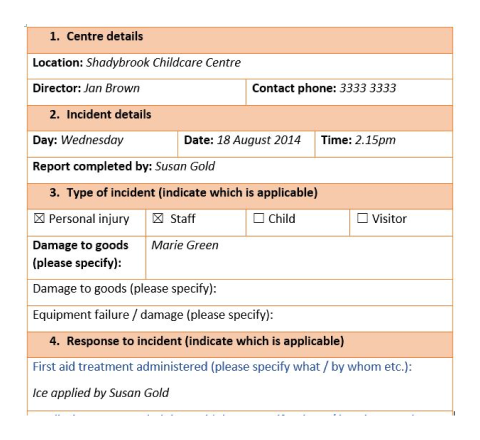
Download this sample incident form.
Communicate with co-workers to ensure that someone who witnessed the event writes the report in a timely fashion. Remember to have your supervisor sign incident reports. This assures that you have filled out the form correctly and have included all pertinent information in an appropriate way.
If you are injured at work, even if it seems like a minor incident, you should report the injury in line with your organisation’s procedures. This usually includes adding an entry to an injury register or completing an injury report. Depending on the severity of your injury, you should seek medical treatment before completing any reports.
Completing workplace documentation relating to injury ensures that:
- You will be covered by worker’s compensation
- Your employer can identify any hazards that led to the injury
- Your workplace becomes safer for you and your colleagues.

Case Study
Alice Sustains an Injury
Alice cuts her finger on a fruit knife while she helps the kitchen staff prepare morning tea. The cut is quite deep and bleeding profusely. One of the kitchen staff members, Robert, comes to Alice’s aid, wrapping her finger in absorbent kitchen towel. He helps her to a chair and calls for one of the Centre’s First Aid qualified staff, Hai, to assist.
Hai examines Alice’s finger and determines that she needs to be seen by a doctor.
Alice returns to work after a few days with her finger heavily bandaged. She is placed on light duties for two weeks while her finger heals.
Explain all the step-by-step reporting WHS procedures Hai and other educators must follow based on the case study.
Use the following questions to check your knowledge. You can check your answers by clicking on the 'Answer' button.
Q1. Describe the aims of emergency and first aid plans.
- To minimise the impact of any incident in the workplace.
- To ensure workers safety and health is protected.
Q2. How can you contribute to the safe execution of evacuation plans in your workplace?
- By following all procedures as outlined in evacuation procedure.
- By following all instructions of wardens and emergency services.
- By participating in evacuation drills.
Q3. Injury and incident reports should be completed only when:
- An injury requires hospitalisation
- An injury occurs either during or as a result of work
- An injury occurs at a primary place of work
- An injury results in a worker needing time off work
Which option is the correct answer?
Q4.First aid kits and first aid trained staff are required:
- In all workplaces regardless of size
- In all workplaces considered to be hazardous places of work
- When requested by workers
- When directed by the WHS regulator
Which option is the correct answer?
Q5. What have you learned so far?
Note down the important concepts you have taken from this topic.
- PCBUs have a responsibility to provide safety procedures for fire, emergency and first aid
- Workers are required to follow all emergency procedures
- All workplaces must have first aid provisions, procedures and trained staff
- All workplaces must have fire and emergency evacuation procedures that include training and drills
- All workplace injuries must be documented following the specific workplace procedure
